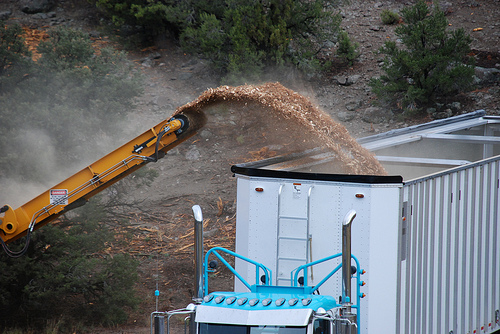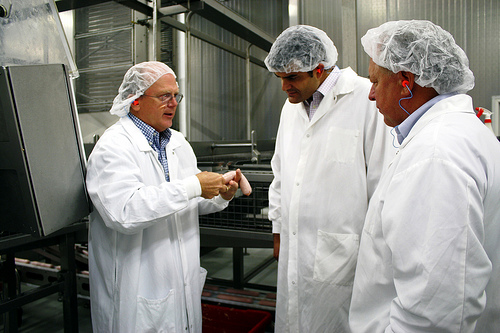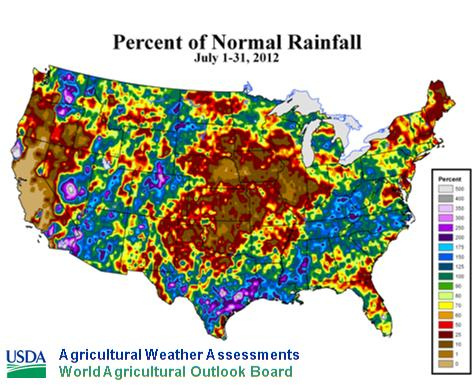
NRCS Supervisory District Conservationist Kelvin Jackson helped tomato producer Danny Daniels expand his farm and make it more environmentally friendly.
For Danny Daniels, tomatoes take first place. He loves growing them so much, they’re the bulk of the produce raised on his Meridian, Miss. farm.
The retiree–turned–tomato guru started growing the fruit a few years ago. Tomatoes are finicky, and Daniels saw growing them successfully as a challenge. Read more »
As drought continues across America, President Obama and I continue doing all we can to help farmers and ranchers. Last week, at the President’s direction, I convened a meeting of the White House Rural Council to ensure we’re doing all we can – and we’ll meet again to discuss drought in the coming days.
We’ll also continue to call on Congress to pass a Food, Farm and Jobs Bill as soon as possible, to give USDA more tools to help and to give more certainty to producers in this difficult time.
Meanwhile, at USDA we continue our work to help grow the economy and create jobs. This includes our support for innovative producers and rural businesses who are already working hard to boost the emerging bio-economy.
From household products made of homegrown crops, to remarkable advanced biofuels that are powering America’s ships and aircraft, the bio-based economy is strengthening our nation while bringing more jobs and economic security to rural America.
Today, more than 3,000 companies are producing more than 25,000 biobased products made from renewable sources grown here at home, and supporting 100,000 American jobs. These companies are developing a wide variety of products – from cleaners and paints to construction materials – for use at home, at work, and by industry. Read more »

A truck is filled with wood chips as part of the process of turning wood into energy
Cross posted from the White House CEQ blog:
Across rural America, biomass like wood pellets and wood chips is helping communities diversify their energy sources, create jobs, and save money on utility bills. At the Forest Service, we are working to support biomass projects that help us manage wildfire threats, and also serve as economic engines for rural communities. Last week, USDA Secretary Tom Vilsack announced grants of $4 million for renewable wood energy projects that will provide 20 small businesses, tribes and community groups with the technical engineering and design services they need to explore installing wood heat and electricity projects. Read more »
The U.S. Forest Service Forest Products Laboratory recently opened a $1.7 million production facility for renewable, forest-based nanomaterials. This facility is the first of its kind in the United States and one that positions the laboratory as the country’s leading producer of these materials, also called nanocellulose.
Nanocellulose is simply wood fiber broken down to the nanoscale. For perspective, a nanometer is roughly one-millionth the thickness of an American dime. Materials at this minute scale have unique properties; nanocellulose-based materials can be stronger than Kevlar fiber and provide high strength properties with low weight. These attributes have attracted the interest of the Department of Defense for use in lightweight armor and ballistic glass. Companies in the automotive, aerospace, electronics, consumer products, and medical device industries also see massive potential for these innovative materials. Read more »

Rural Business and Cooperative Programs Acting Administrator, John Paladino (center), tours Salm Partners, LLC, a sausage manufacturer, in Denmark, WI, with Chris Salm, (left) owner, and Stan Gruszynski (right), Wisconsin Rural Development State Director. Salm Partners, LLC partners with a number of local and regional producers and suppliers.
Today, the diversity of businesses found in our rural communities closely mirrors that of metropolitan areas; coming in all shapes and sizes, small and large; start-up and existing, entrepreneurial and franchised; corporations, companies and partnerships. Both rural and metropolitan, businesses provide jobs, access to goods and services, and open doors to new opportunities for regional development and growth. Read more »

Percent of Normal Rainfall, July 1-31, 2012
Visit www.usda.gov/drought for the latest information regarding USDA’s Drought Disaster response and assistance.
Historically hot, dry conditions covered many of the nation’s key agricultural regions during July. Preliminary data provided by the National Weather Service indicated that July rainfall totaled less than 50 percent of normal in a broad area stretching from the central and southern Plains into the Mid-South and Midwest. No measurable rain fell during July in several locations. Meanwhile, monthly temperatures generally ranged from 4 to 8°F above normal across the northern and central Plains and the Midwest. It was the hottest July on record in cities such as Rockford, Illinois; Denver, Colorado; and La Crosse, Wisconsin, breaking all-time records set in 1921, 1934, and 1936, respectively. Read more »




